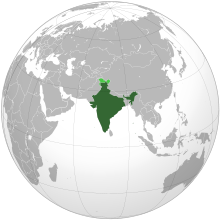India: The Case Against Including Radiological Weapons In WMD Category – Analysis
By IPCS
By Alankrita Sinha
The term weapons of mass destruction (WMD) was first used in a Times (London) article in 1937 and was later defined by the UN in 1947. The UN definition included several weapons under the category of WMDs like atomic explosives, radioactive materials, chemicals, and biological agents. Moreover, it also left space for future developments in the field by stating that any weapons developed in the future with the destructive capability similar to the WMD categorization would be included therein.
Contrary to the UN categorization, India’s nuclear doctrine does not include radiological weapons in the overall category of WMDs to which India can respond with nuclear weapons if attacked. While the Indian draft doctrine of 1999 identifies chemical and biological weapons as weapons of mass destruction (WMDs); the CCS review made in 2003 designed to finalize India’s draft doctrine states that India will respond with nuclear weapons if an adversary uses either nuclear or chemical/biological weapons (CBWs) against its territory or its forces. The exclusion of radiological weapons from the nuclear doctrine is noteworthy. As the world rants about the growing threat of CBRNEs, India has not expanded the scope of its nuclear deterrent by including radiological weapons. This omission warrants a closer examination.
WMDs and CBRNEs: Delineating categories

Recently, WMDs have become easily confused and are used interchangeably with CBRNEs, and this is where the problem lies. While CBRNEs can be WMDs, the vice versa may not always be the case. This is not the fault of the similarities of the two categories in question, but rather the lack of consensus on categorical definitions of the two. WMD as a term became related to effective arms control measures after World War II. It was inherently state-centric in its conceptualization. CBRNEs, on the other hand, denote an array of agents through which destruction or disruption can be furthered. More recently, the use of CBRNE agents by non-state actors has taken centre-stage in the security discourse. In fact, on a closer examination, WMDs have always been associated with ‘weapons’ of military utility whereas CBRNEs are associated ‘agents’ that can be used as weapons or through other diverse means. The resulting confusion in definitions has created confusion in regard to political posturing and operational targeting. The Indian nuclear doctrine is not an exception to this problem.
India’s nuclear doctrine and radiological weapons
According to the Indian nuclear doctrine, only nuclear, biological, and chemical weapons constitute WMDs and there is merit to this assertion. One of the possible rationale for including only NBCs as WMDs can be that both biological and chemical weapons have been outlawed by international instruments, and nuclear weapons have been subjected to strict arms control measures. Therefore, not only is such an attack against India lower in probability because of the taboo associated with NBCs; but also, such attack by an adversary justifies a nuclear response. The same cannot be said about radiological agents.
Moreover, the use of radiological agents is generally attributed to a usage alongside conventional explosives, as in the case of radiological dispersion devices (RDDs) or ‘dirty bombs’. Do conventional weapons spiked with radiological agents warrant a nuclear response? Perhaps not; and for good reason. Such an inclusion would disrupt the means-and-ends calculus associated with the nuclear doctrine which begins with signalling and posturing, and ends with operationalizing a response. The main concern here not only pertains to deterrence as a whole, but also takes into consideration the level at which a state fixes its own response threshold. If a state’s response-threshold is high, it has the flexibility to decide upon an appropriate response to a WMD/CBRNE attack by nuclear/conventional means. If not, it would be compelled to either respond, or backtrack from the threat of retaliation which is the basis of its deterrent posture.
The Dilemma of deterrence and the actuality of response
It should be emphasized that nuclear deterrence is an elaborate mind-game, but there is little credibility that can be placed on empty threats. What should be an appropriate response in case deterrence fails? If radiological agents are included under WMD use against India, the response-threshold of the Indian state would be considerably lowered. The Prime Minister would then be compelled to retaliate massively with nuclear weapons to a dispersed, deliberate use of conventional weapons spiked with radiological agents. What are the chances of this retaliation occurring when India has not been able to respond appropriately to either low-intensity conflicts or deliberate acts of terrorism in the past? Fairly low. A clause which argues for the inclusion of ‘radiological’ agents in India’s categorization of WMDs would therefore impinge on the flexibility of its response (nuclear and conventional) consequent to an RDD attack.
It is essential to understand that India’s overall deterrence posture cannot rely solely on its nuclear weapons. Such reliance would only increase the rift between India’s conventional and nuclear deterrent, thereby diluting the credibility of both; and confusing the policy underlying the use of either.
Alankrita Sinha
Research Officer, IPCS
email: [email protected]
